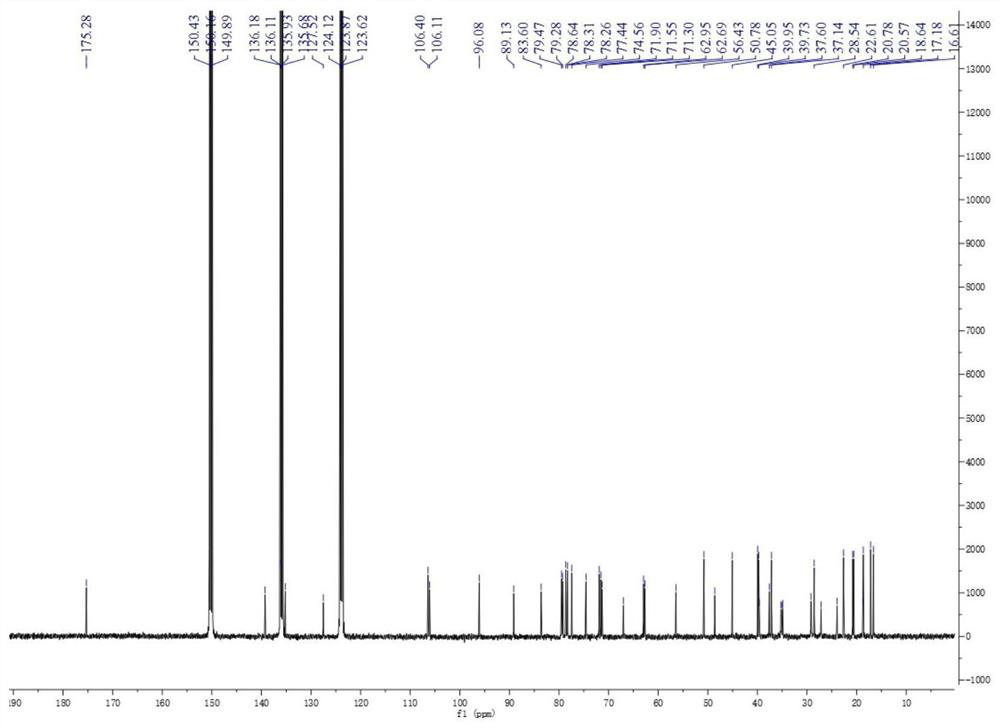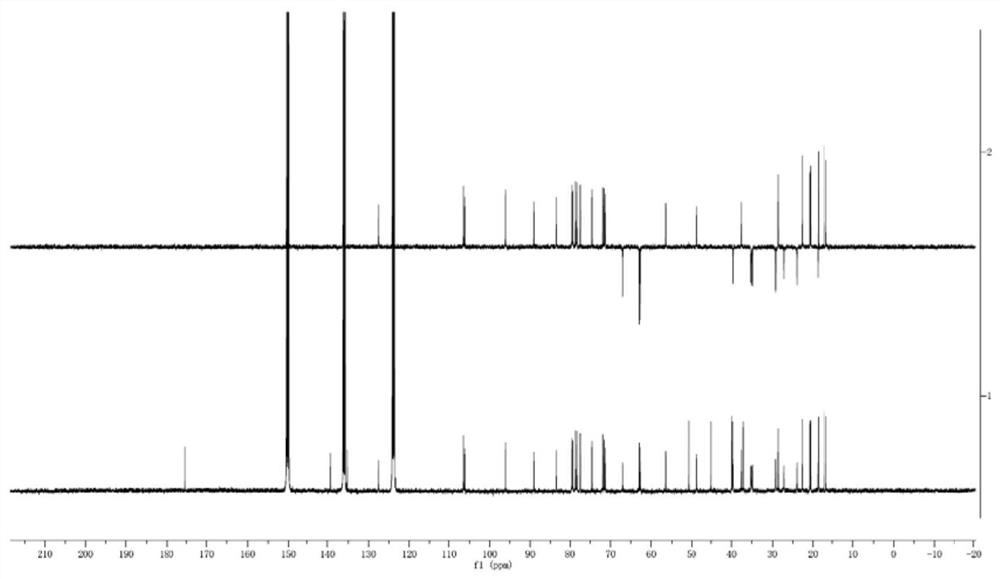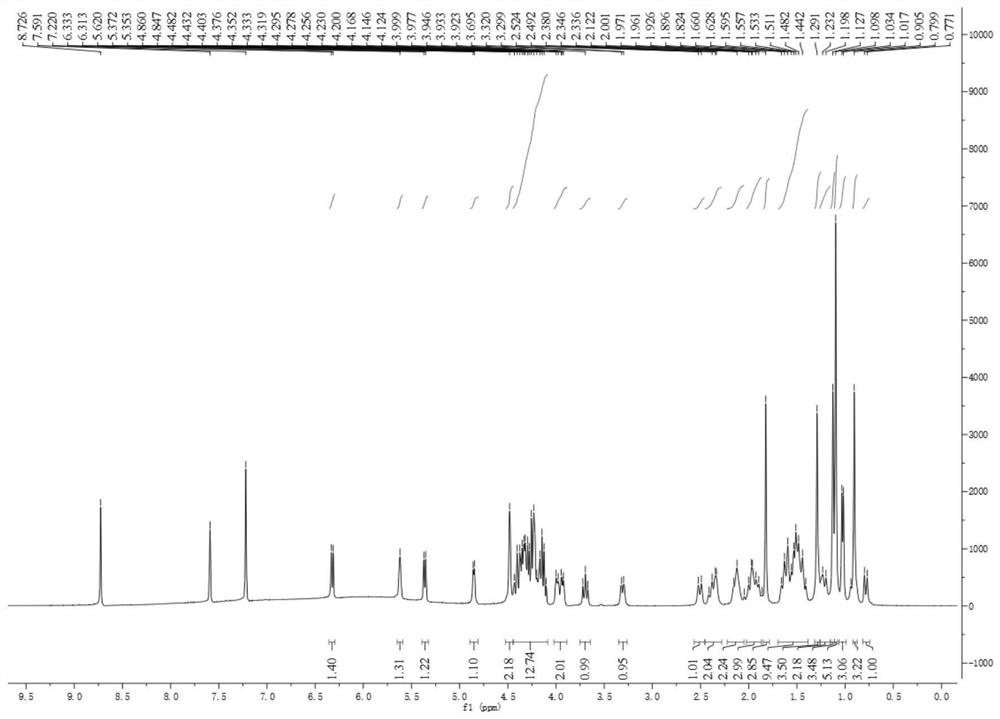Application of Pubescenoside C in preparation of drugs for preventing and treating myocardial ischemia-reperfusion injury
A technology for reperfusion injury and myocardial ischemia, applied in the field of biomedicine, can solve problems such as unsatisfactory results, achieve the effect of improving myocardial ischemia-reperfusion injury and myocardial tissue lesions, and reducing myocardial injury
- Summary
- Abstract
- Description
- Claims
- Application Information
AI Technical Summary
Problems solved by technology
Method used
Image
Examples
Embodiment 1
[0034] 1. Take the roots of Ilex pubescens, extract with 12, 10 and 8 times the concentration of 70% ethanol in turn for 2 hours, combine the ethanol extracts, recycle the ethanol after filtration and concentrate under reduced pressure until there is no alcohol smell, to obtain 2.2 kg of total extract ;
[0035] 2. The obtained total extract is dissolved in water, passed through a D-101 type macroporous resin column, and successively eluted with 30% ethanol, 60% ethanol and 95% ethanol with a concentration; the collection concentration is 60% % ethanol eluent was recovered under reduced pressure to obtain 566g of thick extract, which was passed through a 200-300-mesh silica gel column, using chloroform-methanol as a solvent, with a gradient of 100:1-0:1 in chloroform:methanol Carry out elution; collect the eluent with chloroform:methanol ratio of 7:3, concentrate and pass through ODS column, use methanol:water 7:3 as eluent for elution, collect and concentrate the eluent and p...
Embodiment 2
[0037] The white amorphous powder obtained in Example 1 was positive for Liebermann-Burchard reaction, and finally showed a purple color, indicating that it was a triterpenoid. Mass Spectrum ESI-ME m / z:933[M+Na] + , combined with 13 C NMR and 1 H NMR deduces that its molecular formula is C 47 h 74 o 17 , degree of unsaturation Ω=11.
[0038] 1 H NMR spectrum (attached figure 1 ), the low field δ H 5.62(1H, br s) shows an ene hydrogen signal; δ H 6.32 (1H, d, J = 8.0Hz), 5.36 (1H, d, J = 7.6Hz) and 4.85 (1H, d, J = 7.6Hz) are the terminal hydrogen proton signals of 2 glucose and xylose, high Field δ H The seven A base signal, suggesting that the compound may be an ursane-type triterpene saponin.
[0039] 13 C NMR (with figure 2 ) and DEPT spectrum (attached image 3 ) shows that the compound has a total of 47 carbon signals. In the low field region δ C 175.3 is an ester carbonyl carbon signal, δ C 127.5, 139.1 and δ C 135.2 and 136.1 are 2 groups of olefi...
Embodiment 3
[0043] SD rat myocardial ischemia-reperfusion model was used to verify the effect of the compound on reducing myocardial ischemia-reperfusion injury by studying the effect of Pubescenoside C on myocardial infarction and myocardial injury markers in rats with myocardial ischemia-reperfusion injury.
[0044] 1. Animal dosing groups
[0045] Adult male Sprague-Dawley (SD) rats (WM: 250-280 g) were used for in vivo experiments. Four rats were housed in each cage, and a 12:12h light-dark cycle was performed at a temperature of 22±2°C in an SPF animal room, and the animals were allowed free access to standard rodent chow and distilled water.
[0046] Rats were divided into groups: Group 1: SHAM group, normal saline (i.p.); Group 2: MI / R group, normal saline (i.p.); Group 3: MI / R+Pubescenoside C (10mg / kg, i.p.) ; Group 4: MI / R+Pubescenoside C (30 mg / kg, i.p.). Male SD rats were subjected to left coronary artery ligation. Pubescenoside C was dissolved in absolute ethanol and diluted...
PUM
 Login to View More
Login to View More Abstract
Description
Claims
Application Information
 Login to View More
Login to View More - R&D
- Intellectual Property
- Life Sciences
- Materials
- Tech Scout
- Unparalleled Data Quality
- Higher Quality Content
- 60% Fewer Hallucinations
Browse by: Latest US Patents, China's latest patents, Technical Efficacy Thesaurus, Application Domain, Technology Topic, Popular Technical Reports.
© 2025 PatSnap. All rights reserved.Legal|Privacy policy|Modern Slavery Act Transparency Statement|Sitemap|About US| Contact US: help@patsnap.com



